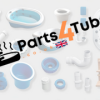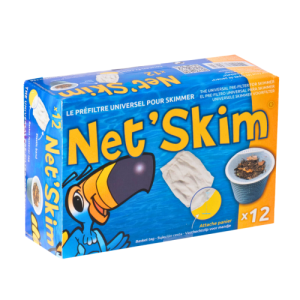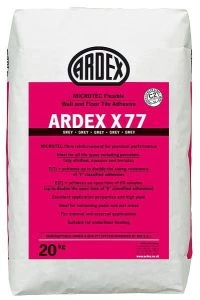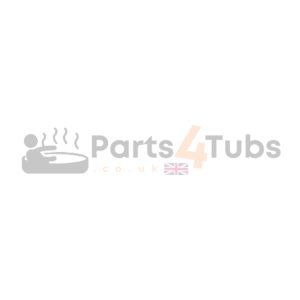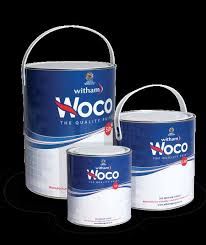Thinners – 2.5 liters l WIP-THIN-2HALF
£43.40 Inc VAT
Thinners – 2.5 Litres | WIP-THIN-2HALF
Essential Solvent for Professional Pool Paint Application
When working with solvent-based pool paints, specialized coatings, or epoxy systems for your swimming pool, spa, or hot tub finish, having the correct thinners on hand is absolutely essential for achieving professional results. This 2.5-litre container of specialist thinners provides the solvent solution you need for proper paint viscosity adjustment, equipment cleaning, and surface preparation. Specifically formulated for pool finishing applications, these thinners ensure optimal paint flow, leveling, and film formation while maintaining the durability and chemical resistance that aquatic environments demand.
What Are Pool Paint Thinners?
As a retailer of hot tub spare parts, I understand that many customers initially underestimate the importance of using correct thinners, but these solvents play absolutely critical roles in successful pool finishing projects. Thinners are specialized solvent formulations designed to reduce the viscosity (thickness) of paints and coatings, making them easier to apply while ensuring proper film formation and curing.
Pool paint thinners differ significantly from standard paint thinners or white spirit you might use for household decorating. They’re specifically formulated to be compatible with the specialized chemistry of pool coatings—including epoxy paints, chlorinated rubber paints, and other solvent-based systems designed for aquatic environments. Using incorrect thinners can compromise coating performance, adhesion, durability, and chemical resistance—potentially ruining an expensive pool refinishing project.
Understanding Thinners in Pool Finishing
Critical Functions of Thinners
Thinners serve multiple essential purposes:
Viscosity Adjustment: Reduces paint thickness to optimal consistency for your chosen application method (brush, roller, or spray). Too thick and paint won’t flow or level properly; too thin and coverage suffers.
Application Enhancement: Properly thinned paint spreads more easily, flows smoothly, and levels to a uniform finish without brush marks or roller stipple.
Spray Application: Spray equipment requires paint at precise viscosity—thinners enable adjustment to manufacturer specifications for optimal atomization and coverage.
Equipment Cleaning: Dissolves uncured paint from brushes, rollers, spray equipment, and other tools, enabling thorough cleaning and preventing equipment damage.
Surface Preparation: Can be used to clean and degrease surfaces before painting, removing contaminants that would prevent proper adhesion.
Paint Salvage: Restores usability to paint that has thickened from partial solvent evaporation during storage.
Compatibility Importance
Critical: Always use thinners specifically recommended for your paint system. Pool coatings represent sophisticated chemistry, and using incorrect solvents can:
- Prevent proper curing and film formation
- Compromise adhesion to the substrate
- Reduce chemical resistance to pool chemicals
- Cause premature coating failure
- Void manufacturer warranties
The WIP-THIN-2HALF thinners are formulated specifically for pool finishing applications, ensuring compatibility with appropriate coating systems.
Key Features and Benefits
Pool Coating Compatibility
Formulated specifically for aquatic coating systems:
Solvent-Based Pool Paints: Compatible with chlorinated rubber, epoxy, and other solvent-based pool coating systems.
Chemistry Matched: Solvent blend engineered to work with the resins and additives in pool coatings without compromising performance.
Controlled Evaporation: Evaporation rate balanced to allow proper application and film formation.
Clean Dissolution: Dissolves paint components cleanly without leaving residues or causing separation.
Professional Application Performance
Enables optimal coating application:
Viscosity Control: Allows precise adjustment of paint thickness to ideal consistency for your application method.
Flow Enhancement: Properly thinned paint flows smoothly from brush or roller, reducing application effort.
Leveling Improvement: Adequate thinning enables paint to self-level, reducing brush marks and creating smooth finish.
Spray Optimization: Achieves the precise viscosity required for professional spray application with optimal atomization.
Working Time: Appropriate evaporation rate provides adequate working time without extending drying excessively.
Equipment Cleaning Efficiency
Essential for maintaining tools and equipment:
Paint Removal: Effectively dissolves uncured paint from all application tools and equipment.
Equipment Protection: Thorough cleaning with appropriate thinners prevents paint buildup that damages tools.
Spray Equipment Care: Essential for cleaning spray guns, lines, and equipment where dried paint causes expensive damage.
Brush and Roller Maintenance: Properly cleaned brushes and rollers last longer and perform better on subsequent projects.
Time Efficiency: Effective solvents clean equipment faster with less effort.
2.5 Litre Container
Practical quantity for pool projects:
Project Quantity: Sufficient for typical residential pool painting project thinning requirements and equipment cleaning.
Storage Convenience: Manageable size that’s easier to handle and store than larger drums.
Cost Efficiency: Larger than small retail containers, providing better value for project requirements.
Waste Reduction: Right-sized quantity reduces risk of having excessive leftover solvent that deteriorates in storage.
Applications
Paint Thinning for Application
Primary use in pool finishing:
Brush Application: Slight thinning often improves flow and reduces brush marks while maintaining coverage.
Roller Application: Minimal thinning may improve roller flow and reduce stipple texture.
Spray Application: More significant thinning required to achieve viscosity suitable for spray equipment atomization.
Environmental Adjustment: Additional thinning may be needed in hot weather where rapid evaporation increases viscosity.
Equipment Adaptation: Adjust viscosity to suit specific spray equipment or application tools being used.
Equipment and Tool Cleaning
Essential maintenance function:
Immediate Cleanup: Clean brushes, rollers, paint trays, and mixing containers immediately after use.
Spray Equipment: Thoroughly flush spray guns, hoses, and pots to prevent paint buildup.
Measuring Tools: Clean mixing sticks, measuring containers, and other project equipment.
Accidental Spills: Remove wet paint from surfaces, clothing, or equipment before it dries.
Project Breaks: Clean equipment thoroughly when taking breaks to prevent paint hardening.
Surface Preparation
Pre-painting preparation uses:
Degreasing: Remove oils, greases, or contaminants from surfaces before painting.
Adhesion Preparation: Clean surfaces to ensure optimal paint adhesion.
Residue Removal: Clean away dust, debris, or previous coating residues.
Final Wipe-Down: Last cleaning step before applying fresh coating.
Paint Salvage and Adjustment
Restoring usability to stored paint:
Thickened Paint: Restore proper consistency to paint that has thickened from partial solvent evaporation.
Viscosity Correction: Adjust paint that’s too thick due to storage conditions or formulation variation.
Mixing Aid: Facilitate thorough mixing of settled paint components.
Usage Guidelines
Thinning Ratios
Critical: Always follow paint manufacturer’s recommendations for thinning ratios. General guidelines:
Brush/Roller Application: Typically 0-10% thinners by volume (often minimal thinning needed).
Spray Application: Typically 10-20% thinners by volume, depending on equipment and paint viscosity.
Environmental Factors: May require additional thinning in hot conditions where rapid evaporation thickens paint.
Testing: Test thinned paint on inconspicuous area or test panel before proceeding with full application.
Incremental Addition: Add thinners gradually in small amounts, mixing thoroughly and testing before adding more.
Over-Thinning Risk: Excessive thinning reduces film build, compromises coverage, and can cause runs and sags.
Mixing Procedure
Proper mixing ensures consistent results:
- Measure Carefully: Use graduated containers or scales for accurate thinners measurement.
- Add Gradually: Pour thinners into paint slowly while stirring constantly.
- Mix Thoroughly: Stir or mix completely ensuring uniform consistency throughout.
- Test Viscosity: Check flow characteristics before application—for spray, use viscosity cup if available.
- Adjust if Needed: Add small additional amounts if consistency isn’t quite right, mixing thoroughly between additions.
- Record Ratio: Note thinning ratio used for consistency across project and future reference.
Equipment Cleaning Process
Effective cleaning technique:
Immediate Action: Clean equipment as soon as possible after use—dried paint is much harder to remove.
Initial Wipe: Remove excess wet paint with rags or paper before solvent cleaning.
Solvent Wash: Immerse brushes in thinners, work bristles to release paint, or flush spray equipment thoroughly.
Mechanical Action: Use brush comb or agitation to help release paint from bristles.
Multiple Rinses: Use fresh thinners for final rinse ensuring all paint residue is removed.
Dry and Store: Allow tools to dry completely before storage to prevent solvent damage.
Safety and Handling
Health and Safety Precautions
Flammable: Thinners are highly flammable liquids. Keep away from heat sources, sparks, and open flames.
Ventilation: Use only in well-ventilated areas. Solvent vapours can cause dizziness, headaches, or more serious health effects in poorly ventilated spaces.
Protective Equipment:
- Wear chemical-resistant gloves to prevent skin contact
- Use eye protection to prevent splashes reaching eyes
- Consider respiratory protection in poorly ventilated areas or during prolonged exposure
- Wear protective clothing to prevent skin contact
Avoid Inhalation: Don’t breathe vapours. If working indoors, ensure excellent ventilation or use appropriate respiratory protection.
Skin Contact: Avoid prolonged or repeated skin contact. Wash thoroughly with soap and water if contact occurs.
Ingestion: Do not ingest. If swallowed, seek immediate medical attention and show product container/label.
First Aid: Keep first aid information and emergency contact numbers readily available during use.
Storage Requirements
Proper storage ensures safety and product viability:
Sealed Containers: Keep container tightly sealed when not in use to prevent evaporation and reduce vapour exposure.
Cool, Dry Location: Store in cool, dry, well-ventilated area away from heat sources.
Fire Safety: Store away from ignition sources, electrical equipment, or other potential fire hazards.
Upright Position: Keep containers upright to prevent leaks.
Child Safety: Store out of reach of children in secure location.
Away from Food: Never store near food, drink, or animal feed.
Shelf Life: Use within reasonable timeframe—thinners can deteriorate over extended storage.
Disposal
Environmental Responsibility: Never pour thinners down drains, into sewers, or onto the ground. Solvent disposal into drains can damage wastewater systems and pollute water supplies.
Regulations: Dispose of used thinners and contaminated materials according to local environmental regulations.
Collection Services: Many areas have hazardous waste collection facilities or events—contact local authorities for information.
Container Disposal: Empty containers may retain flammable residues—dispose according to local regulations.
Professional Disposal: For larger quantities, consider using professional hazardous waste disposal services.
Technical Specifications
| Specification | Detail |
|---|---|
| Product Code | WIP-THIN-2HALF |
| Product Type | Pool Paint Thinners / Solvent |
| Container Size | 2.5 Litres |
| Category | Pool Shell Finishes |
| Primary Use | Thinning solvent-based pool paints, equipment cleaning |
| Compatibility | Solvent-based pool coatings (verify specific paint compatibility) |
| Application Methods | Paint thinning, equipment cleaning, surface preparation |
| Thinning Ratio | Typically 0-20% depending on application method (follow paint manufacturer recommendations) |
| Flammability | Highly flammable – keep away from heat, sparks, flames |
| Ventilation | Use only in well-ventilated areas |
| Protective Equipment | Gloves, eye protection, respiratory protection as needed |
| Storage | Cool, dry, well-ventilated area away from ignition sources |
| Disposal | According to local environmental regulations – do not pour down drains |
| Shelf Life | Use within reasonable timeframe (typically 1-2 years if properly stored) |
| Safety Classification | Flammable liquid – observe all fire safety precautions |
Why Correct Thinners Matter
In my experience supplying pool finishing products, I’ve heard countless stories of projects compromised by using incorrect thinners. The consequences include:
Adhesion Failure: Wrong solvents can prevent proper bonding to the pool surface, causing premature peeling.
Chemical Resistance Loss: Incorrect thinning may compromise the coating’s ability to resist pool chemicals.
Curing Problems: Wrong solvents can interfere with proper paint curing, leaving soft or tacky finish.
Appearance Issues: Inappropriate thinners may cause surface defects, discoloration, or texture problems.
Warranty Voidance: Using non-recommended thinners typically voids manufacturer warranties.
The WIP-THIN-2HALF thinners are formulated specifically for pool finishing applications, providing the compatibility and performance these specialized projects demand.
Professional Results
Achieving professional pool finishing results requires attention to every detail, and using correct thinners is fundamental to success. Whether you’re adjusting paint viscosity for optimal application, maintaining your equipment properly, or preparing surfaces for coating, having the right thinners available ensures you can complete each task correctly.
The 2.5-litre container provides the quantity needed for typical residential pool projects without excessive leftover material, while the pool-specific formulation ensures compatibility with your coating system and optimal performance throughout the application and curing process.
Note: Always verify compatibility of thinners with your specific paint system before use. Follow paint manufacturer recommendations for thinning ratios and application procedures. Thinners are flammable and must be used with appropriate safety precautions including adequate ventilation, protective equipment, and fire safety measures. Store and dispose of responsibly according to local regulations. If uncertain about any aspect of thinning or application, consult with professional pool finishing contractors.
Related products
Pool Shell Finishes
Pool Shell Finishes
Water Based Paint – Forget Me Not (Blue) (5Ltrs) l PP-337-18E51
Pool Shell Finishes
Pool Shell Finishes
Pool Shell Finishes
Chlorinated Rubber Paint – Forget Me Not (Blue) (5Ltrs) l PP-519-18E51
Pool Shell Finishes
Pool Shell Finishes
Pool Shell Finishes


